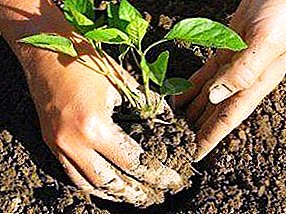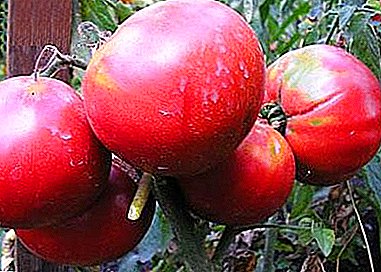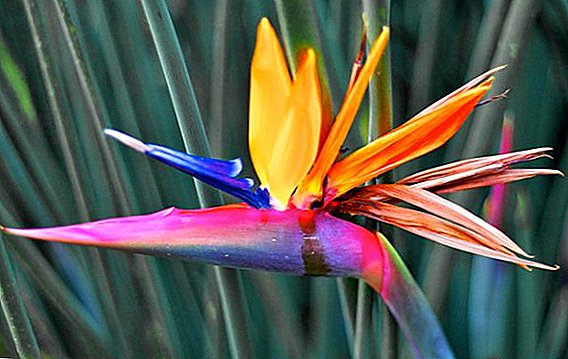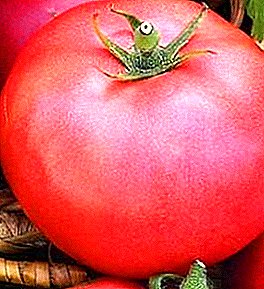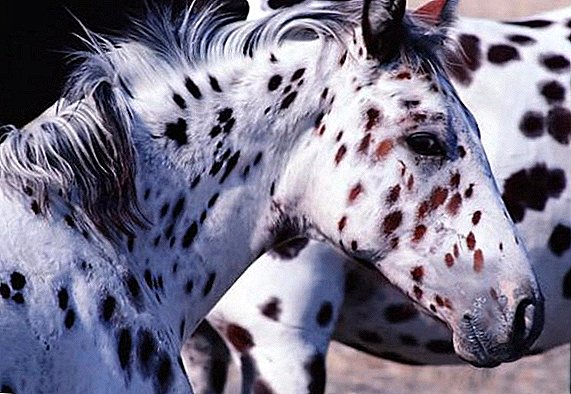 These animals invariably attract the attention of others. The key to their popularity was an unusual coloring and friendly character. Many are interested in how this breed was bred and what are its characteristic features. Let's take a closer look at the "spotted" horses.
These animals invariably attract the attention of others. The key to their popularity was an unusual coloring and friendly character. Many are interested in how this breed was bred and what are its characteristic features. Let's take a closer look at the "spotted" horses.
Breed origin
The Appaloosa is an American breed of horse. The center for the breeding of these unusual-looking animals in the 18th-19th centuries was the coast of the Palouse River in the north of the USA.
"Breeders" are considered to be Indians of the Nez Perce tribe, who lived in the territory of modern Idaho, Oregon and Washington. At the end of the 18th century, the territory of North America was actively developed, and Chubar horses were imported from Europe, which the natives bought and crossed with representatives of the local lines, as a result of which a new breed appeared.  It owes its name to the white settlers. When they arrived in the north-western part of Palouse, they, without thinking twice, called these animals "Palouse horses." A little later, this phrase was reduced to our usual "appaloosa."
It owes its name to the white settlers. When they arrived in the north-western part of Palouse, they, without thinking twice, called these animals "Palouse horses." A little later, this phrase was reduced to our usual "appaloosa."
In the 1870s, the army actively fought with the Indians, and the Ne-Perce had to flee. The transition was 1300 miles long - in 1877, the Indians fled from the cavalry corps. The horses survived this “race,” but the tribe was still defeated.
Important! The diet is traditional: The main emphasis is on the consumption of oats with top dressing from hay. Although the horse will not refuse treats like carrots or sugar either.After this, the population of Appaloses was significantly reduced: some of the animals were taken by farmers, others were requisitioned by the army, many were killed. The traditions of horse breeding began to fade, and indiscriminate crossing did not give the proper characteristics.
The breed has been preserved thanks to enthusiasts, in particular Claude Thompson, who in 1938 founded the Appalois Fans Club. At the same time, the line was officially recognized, and the population began to gradually increase. 
Learn how to harness a horse.
Characteristics and description of the breed
Having learned about the origin of animals, consider what is remarkable about this breed.
Height and weight
An adult horse grows to 1.42-1.55 m "at the withers". These are average indicators of the standard in which most of the representatives of the breed fit. In some instances, this figure can reach as high as 1.63 m, although such “tall” appaloosa is a rarity.
Did you know? Spotted horses have long been known to mankind. Such animals were even painted on rocks - in the caves of France and China they still find similar sketches, whose age is estimated at 15-20 thousand years.A weight of 440-500 kg is considered normal. For a small animal it is a lot, but at the expense of powerful legs, such a mass does not cause any problems.

Exterior
If you look at the usual horse appaloosa, shown in the photo, you can note its proportionality.
 "Generic" signs of the breed are:
"Generic" signs of the breed are:
- neat head with small pointed ears;
- muscular, precisely “stuck together” neck;
- a rather short athletic back;
- rounded powerful croup;
- strong legs with very hard hooves;
- high tail arrangement;
- soft-touch mane and tail.
These horses have another feature - expressive eyes. The fact is that the sclera surrounding the eyeball is more pronounced in appaloses than in other breeds. Therefore, a white "cannon" is clearly visible around the apple.
Black spots of small sizes are often visible on the face - this is also a sign of the line.
Important! Pedigree horses are often predisposed to uveitis (inflammation of the vascular ocular layer). The disease can lead to partial loss of vision or complete blindness of the animal.
There are also peculiarities for hooves. They may show vertical stripes of white or dark shade. In most cases, they are a kind of continuation of the bright marks on the legs. But you should not lose vigilance - such a strip may be the result of injury.
Suit
The original combination of tones and shades immediately catches the eye. In everyday life such horses are called chubar.
Experts also use a more accurate classification, highlighting the following color options:
- suited;
- spotted;
- chaly (with a large number of white hairs in wool);
- cheprak (white spot on the croup with a small dark patches);
- robe cheprak;
- spotted cheprak;
- robe with a large number of spots.
- leopard (white with clear dark spots on all parts of the body);
- marble (frequent dark specks);
Did you know? In the world there are about 500 thousand such horses, and the annual increase is about 10 thousand foals. For comparison, in the middle of the XIX century, the Indians had three thousand livestock.
- cheprachnoy;
- "snow" (dark specks actively advocate on the thigh);
- "hoarfrost" (dark spots have light spots on the horse).

Character and temper
Appaloosa, like any horse, has its own character. As we already know, this breed was bred specifically for working with people, so it’s not difficult to get along with such a horse.
They are balanced and appeasable, with a good temper. Appaloosa is very loyal, a change of rider or owner can turn into stress for the animal - in such situations, the horse, as they say, shows character.
Despite the seeming meekness, they are bold in unusual situations.
Important! To get a horse, it is recommended to equip 2 arenas - Summer and winter version. If possible, it is better to keep them separate, in spacious stalls with a water supply.
Calm and enduring "beast" well tolerates the neighborhood of other pets.
Distinctive features
Differ, first of all, in endurance - such runs is not to be frightened by long runs. At the same time there is a fast run. The combination of developed croup and strong legs considerably softens the movement for the rider. A clear plus for those who are planning to do the jumps is a great scoop (in other words, the ability to change the pace of the ride) without breathing failure. In addition, appaloosa and great jumpers.  Due to the natural ingenuity, they quickly learn, easily mastering new techniques.
Due to the natural ingenuity, they quickly learn, easily mastering new techniques.
Check out these horse breeds: Vladimir, Arab, Akhal-Teke.
Breed use
These horses are great for professional racing and trotting, and for unhurried horseback riding. These are the main areas of application.
In the subsidiary farm, they are occasionally used for grazing large livestock in mountainous areas - physical appaluz conditions are also suitable for such purposes.

Did you know? The Absarokee Sunset bay horse, who has lived for 18 years, is considered the most prolific of all appaloses. He managed to give life to 449 foals, 10 of which are included in the master list of the breed.
But as a "tractor" beautiful (besides, expensive) horses are not used.
Now you know what are interesting appaloises and how they differ from other breeds. We hope this information is useful to you, and our readers will be able to quickly make friends with the spotty beauties.


